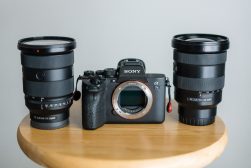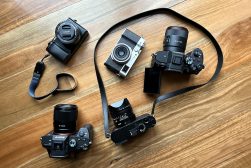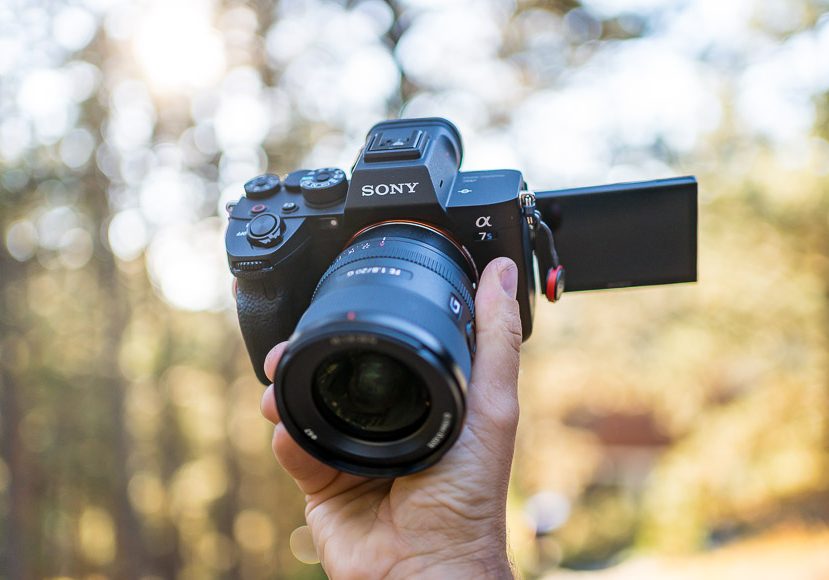
Sony a7S III Review
With unparalleled low light performance and stunning 4k 120fps video, the Sony a7S III was worth the wait. Check out our detailed review.
The long-awaited Sony a7S III is finally here. Photographers and filmmakers have been eagerly anticipaing this camera for over 4 years (the a7S II was released in 2015) and it’s finally been released!
This camera boasts some impressive specs like incredible low light performance, 4k 120fps video, and that all-important front-facing screen for vlogging.
As a photographer who’s gotten more excited about video over the years, I was very interested in giving the Sony a7S III a test run.
It appears to have been designed as a video-first camera but also has some incredible photo features as well.
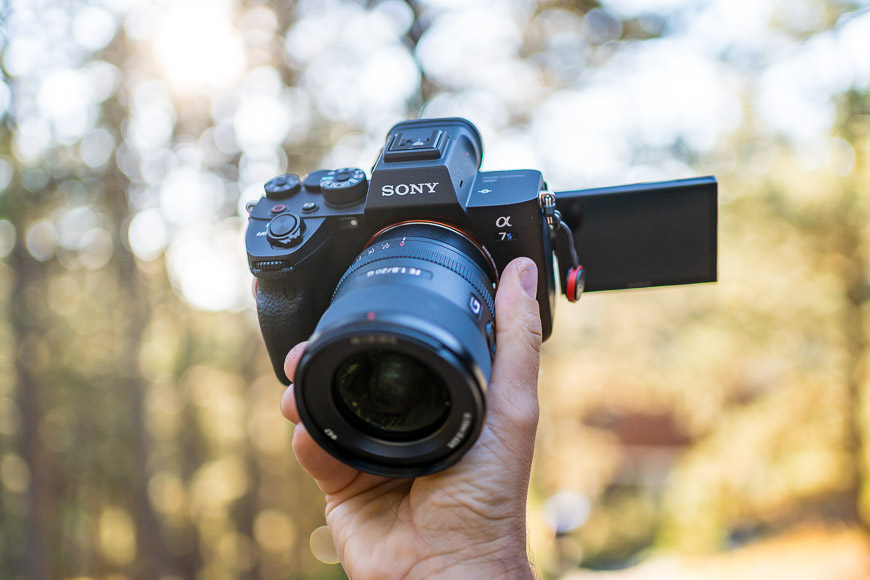
Offers exceptional low-light performance and autofocus making this the best all-round hybrid photo/video camera of the year.
I’ve been a Sony user since 2016 and love the innovation that they’ve brought to the market.
As such, I’m excited to share more of my thoughts on why I think this is one of the most popular mirrorless cameras released in recent years.
Read on to find out what makes the Sony a7S III so innovative.
Table of Contents
Sony a7S III Specs
- Incredible low light performance
- Impressive video specs
- New menu system
- Flip screen
- Low sensor resolution
- Small LCD display
- Sensor: 12MP Full-Frame CMOS Sensor
- Focusing: Autofocus system with 759 phase-detect and 425 contrast points
- FPS: Up to 12 fps mechanical and 20 fps electronic
- Viewfinder: 9.44M-dot OLED viewfinder
- Screen: 1.4M-dot tilting touch LCD
- 2 Memory card slots: CF-express Type A/SD/SDHC/SDXC (UHS-II)
- 4K video: 4K120 10-Bit 4.2.2 Internal Video
- Wireless: Wi-Fi & Bluetooth
Build & Appearance
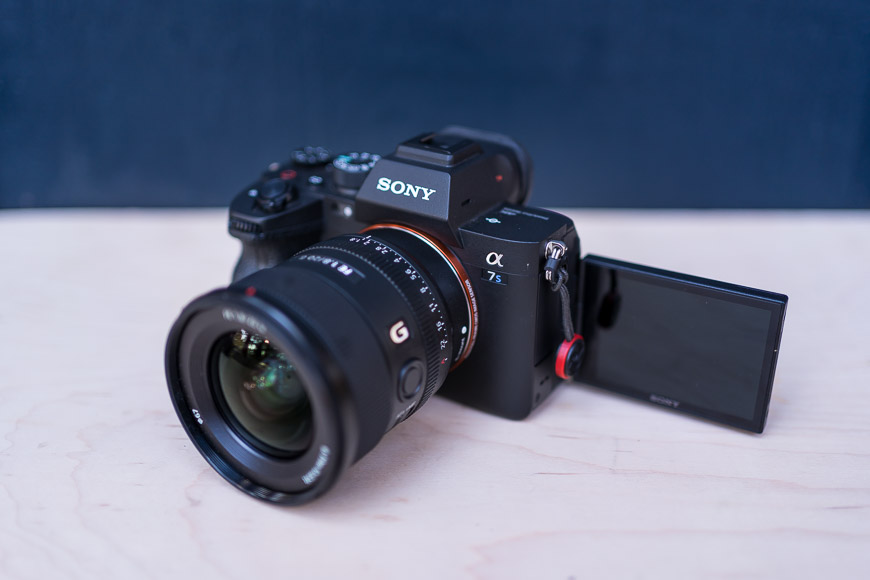
The Sony a7S III paired with the Sony 20mm f/1.8.
With each new camera release, Sony refines the look and feel of their cameras while staying true to their origins of small/light designs. The Sony a7S III uses a very similar form factor to the other new mirrorless a7 series cameras.
The biggest new feature is the addition of a fully articulating flip-out screen. This simple feature has been requested for years and Sony finally delivered.
The main advantage to a flip screen is the ability to take images at all angles (above, below, to the side, etc) while also being able to film yourself vlog style.
Fully weather-sealed and with a very rugged design, the Sony a7S III is ready for whatever you throw at it, and the fully-articulating screen is ideal for vlogging or capturing creative angles.
Initially, I was sceptical of the a7 cameras because they felt small, but I can attest to the fact that they are very durable and tough (the a7S III included).
The Sony a7S III maintains the simple look of its predecessors with a few small refinements like locks on the exposure and mode dials. Sony mirrorless cameras aren’t the most beautiful cameras on the market but they certainly have the performance to prove their value.
Inside the viewfinder, this camera really comes to life. With over 9 million dots, the EVF is one of the world’s best. These types of performance specs are what set this camera apart from the competition.
Ergonomics & Handling

The Sony a7S III has updated controls and a dedicated record button.
Having used Sony cameras for several years, the a7S III felt very natural in my hand with some nice improvements.
First off, the grip is more comfortable and easier to hold.
Secondly, all the buttons feel very crisp. Maybe it’s the fact that my older a7 III bodies are seeing some wear, but the functions on this camera just felt more refined and responsive.
The mode selection and exposure compensation dials now have locks so you don’t inadvertently change settings. I have issues with this on some of my other Sony cameras so it’s a nice feature to have.
Additionally, there’s now a dedicated record button on the top of the camera for shooting movies. The location of this button has changed a lot over the years but I like the new location the best. It means the button is now accessible regardless of how you’re holding the camera.
Many people will be excited to learn that the Sony a7S III has a completely redesigned menu system that’s much more user friendly and touch compatible.
I find this menu much easier to navigate and very well thought out. Check out the video below for a rundown on how I set up my settings for photo and video:
A few other things have been improved with the Sony a7S III including the port doors on the side of the camera and the memory card door. Both of these access doors feel more firm and rugged than previous generations.
As mentioned above, the flip screen on this camera is really useful. It allows you to film yourself but also do things like put your camera over your head at an odd angle and still view your composition – things that just weren’t possible with the previous tilt screen design.
Another ergonomic improvement is the improved placement of the screen to EVF switch. Placed at the bottom of the EVF, it’s now much more effective at detecting when you hold the camera up to your eye.
Many of the small ergonomic improvements Sony has made on this camera are the result of carefully listening to user feedback. I appreciate their attention to detail and hope they continue this method of development.
Focus Performance

Sony a7S III + 20mm f/1.8 | 1/320 f/2.8 ISO 160
The autofocus on the Sony a7S III has reached the point that it is almost instantaneous. Put simply, it just works!
In addition to being extremely fast, the focus is also smooth. The object tracking focus mode is especially impressive. Available for both stills and video, it can track an object that you select and keep it sharp regardless of where it moves in the frame.
I will go into more detail below but the incredible low light performance of this camera allows it to focus accurately in extremely dark situations (and keep up with features like object tracking).
Eye autofocus on the Sony a7S III is seamlessly integrated into the focus system, automatically transitioning smoothly from eye to face tracking when subjects get further away (there’s no longer any need to manually activate eye AF).
When it comes to video, some people wanted smoother focus racking and the Sony a7S III definitely delivers. The natural transitions make it feel like someone is manually pulling focus. The speed of focus transition can also be more finely adjusted in the menu system.
The best part about the focus system of the Sony a7S III is that it works so effectively, you almost don’t notice it’s there. That is the measure of the perfect focus system in my mind.
Low Light Performance

Sony a7S III + 20mm f/1.8 | 6sec f/1.8 ISO 25600
Hands down, the Sony a7S III is the king of low light performance. What other camera can produce usable video and still images at ISO 25,600?!
If there’s one thing the a7S III was designed to reign supreme at, it’s shooting in extremely dark situations. I find myself able to capture scenes that were not previously possible, like taking videos of the milky way galaxy.
The way that the a7S III accomplishes such impressive performance at high ISO is by reducing the resolution. The full frame sensor is only 12 megapixels which allows it to have much larger pixels to capture more light and produce less noise.
If you want a camera that can take usable photos and videos in near pitch black, check out the Sony a7S III.
Image Quality

Sony a7S III + 35mm f/1.8 | 1/800 f/2.2 ISO 320
Although it only offers 12 megapixels, the Sony a7S III has impressive image quality. As mentioned above, the low light performance is incredible but the dynamic range is also worth noting.
Sony claims up to 15 stops of dynamic range, but the impressive part is that (depending on how it’s tested) it offers around 12 stops of dynamic range up to ISO 16,000.
The fact that the Sony a7S III can maintain so much detail even at very high ISO values is unparalleled.
Aside from dynamic range, this camera also has great sharpness and JPEG/RAW output. All the files I looked at in Lightroom had a ton of detail and edited very nicely.
The other improvement in image quality comes with color science. This camera has improved color rendition that gives a better representation of skin tones in portraits. I especially liked how the images looked when combined with the large dynamic range.
Some people may be concerned with the low megapixel count of the Sony a7S III but for most uses, 12 megapixels is adequate. In this case, Sony has prioritized low light performance over resolution and it’s a worthy exchange in many situations.
If 12MP isn’t enough for you, I would suggest you look at the amount of printing and cropping you actually do on your images. Unless you’re making large prints, I would argue that 12MP is more than enough.
Overall Performance

Sony a7S III + 35mm f/1.8 | 1/800 f/2 ISO 320
Overall, I’m very impressed with the Sony a7S III. It excels at operating quickly and recording high-quality photos and videos efficiently.
With only 12 megapixel photos to process, the buffer is able to keep up with a nearly endless number of raw images. With the CF-Express Type A cards, you can record unlimited 4k 120 fps video.
Overall, the experience of this camera is very fast and easy to use.
Other Useful Features

The Sony a7S III has a wide range of innovative features.
There are a ton of small features and improvements in the Sony a7S III. With each iteration, there are improvements that make the Sony cameras better and more efficient.
With this camera, a few small features (not already mentioned) stood out and caught my attention. The microphone port is now a single door port that makes it easier to have an attached microphone.
Another small feature was the strap attachment points now have more friction and don’t rattle around like on previous models. This helps reduce the jingling noise that the clips used to make when moving the camera.
Lastly, I now really appreciate that the photo and video menus and settings are separate. This means that you can quickly switch between photo and video while keeping different settings for each mode.
I’m sure there are a ton of small improvements that I haven’t listed but this camera is still a clear improvement from previous versions.
Value for Money
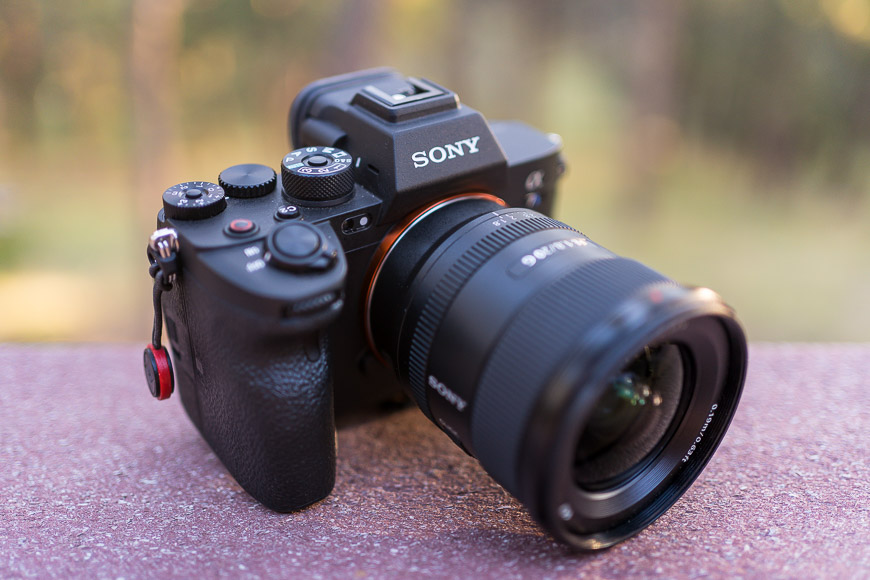
The Sony a7S III offers incredible value given its list of features.
With the impressive photo and video capabilities of the Sony a7S III, it really is great value for money at around US$3,500.
No other camera can match the performance of this one when it comes to the low light performance, 4k 120fps unlimited recording, autofocus, and compact size. As a hybrid camera, the Sony a7S III delivers amazing value.
If you want the best in quality 4k video and low light, there really isn’t a match for the Sony a7S III. Its compact form and impressive specs make it an obvious choice for the hybrid photo/video creator.
Many people say the Canon R5 at around $3,900 is the logical competitor, but the difference is that the Sony is more of a video-first camera whereas the Canon is a photo-first camera.
Regardless, if you’re considering the Sony a7S III, I highly recommend it because it’s a really fun camera to shoot with.
Sony a7S III Review | Conclusion

Sony a7S III is an impressive camera.
With so many amazing features offered by the Sony a7S III, it’s hard to not feel the desire to upgrade. Although I only had this camera for a few weeks, I will soon be adding it to my kit.
The low light performance, autofocus, video features, new menu system, and compact size make it an incredible camera. My only complaint is the lower resolution for still images. I’d love to see a similar camera with around 20 megapixels.
Despite the resolution limitation, this will be a huge addition to my bag. If I need more resolution, there are tons of options available to pair with this camera (like the Sony a7 III or Sony a7R IV). Realistically, the resolution on this camera is adequate for 99% of my use cases and won’t be an issue.
I hope you enjoyed my review of the Sony a7S III and have the chance to check out this awesome camera soon.

Offers exceptional low-light performance and autofocus making this the best all-round hybrid photo/video camera of the year.








